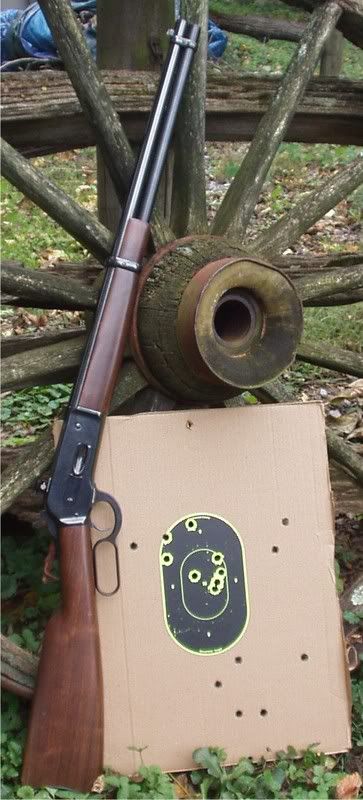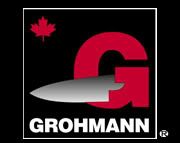 Shown to the left is my Browning 1886 Saddle Ring Carbine (SRC) together with the first target I shot using the newly mounted Williams Foolproof Receiver Sight (FP-71). You can disregard the bullet holes from outside the c-more target as those were from earlier experiments. Just note the tight 5-round group at the center. That's what this gun can do with this sight. I love it.
Shown to the left is my Browning 1886 Saddle Ring Carbine (SRC) together with the first target I shot using the newly mounted Williams Foolproof Receiver Sight (FP-71). You can disregard the bullet holes from outside the c-more target as those were from earlier experiments. Just note the tight 5-round group at the center. That's what this gun can do with this sight. I love it.The Winchester 1886 from which it is derived, there are a couple of slight differences in the mechanism, was designed by John Browning for Winchester. It had to be done, after all Marlin's 1881 in .45-70 was taking market share from the Winchester 1876 because it was chambered for the real thing, the .45-70 Government cartridge.
The Browning guns were made by Miroku in Japan. They are quality throughout and good guns. The finish is excellent. You might notice that there is a difference in the profile of the buttstock. I've no idea why Browning or Miroku made the decision to do that. So, while it confounds and/or disturbs some hard-core afficianados of the 1886 it is of no issue for me. When I put this gun to my shoulder the sights align as they should and it settles into my shoulder as it should. All's well!
I've shot this gun with the factory loads in both the 405 gr. at 1200-1300 fps and 300 gr. at 1800 fps versions and prefer the latter, slightly. So, when I set up to handload/reload for the cartridge I tried to duplicate that 300 gr. bulleted "express" loading. It was easy to do with 54 gr. of H322 and using either the Speer or Sierra 300 gr. bullets made for this application I was right on the money velocity-wise. This was born out on target as using any of these loads, even mixed in a magazine full, produces the tight targets on point of aim at 100 yards. I like that.
I did get the gun for a bit more oomph and if that is necessary, I expect that I will use Elmer Keith's load of 53 gr. of IMR-3031 to push a 405 gr. bullet like Remington's to about 1800 fps. That should do for my purposes.






















No comments:
Post a Comment